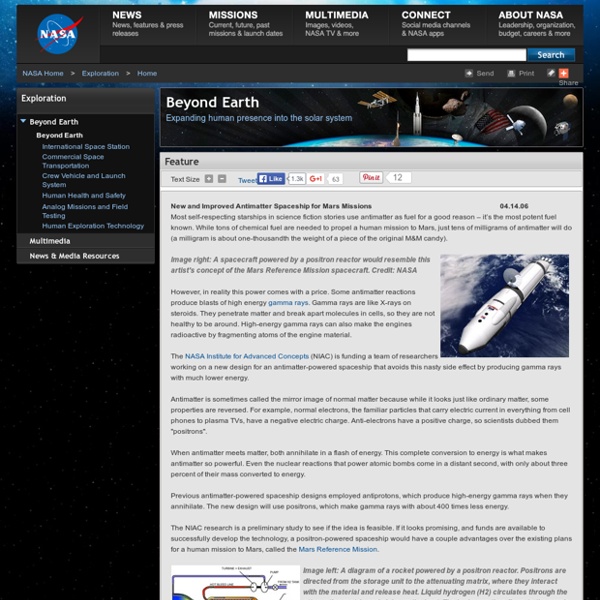New and Improved Antimatter Spaceship for Mars Missions

NASA facilities
NASA facilities exist across the United States, but also across the world. NASA Headquarters in Washington, DC provides overall guidance and political leadership to the agency.[1] There are 10 NASA field centers, which provide leadership for and execution of NASA's work. These field centers are: Ames (Research), Armstrong (Flight Research), Glenn (Research), Goddard (Space Flight), JPL (Space Flight), Johnson (Space), Kennedy (Space), Langley (Research), Marshall (Space Flight), Stennis (Space).[2][3] All other facilities fall under the leadership of at least one of these field centers.[4] Some facilities serve more than one application for historic or administrative reasons. NASA has used or supported various observatories and telescopes, and an example of this is the NASA Infrared Telescope Facility. List of the 10 NASA Field Centers[edit] Goddard Space Flight Center, Maryland Kennedy Space Center, Florida John F. Jet Propulsion Laboratory in Pasadena, California John H. George C.
Related:
Related:



